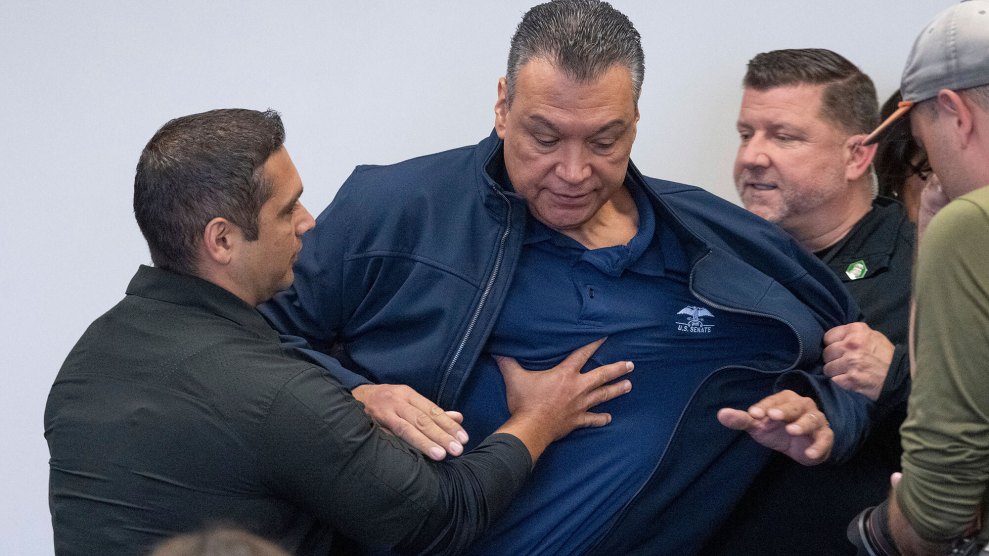Via Legal Theory Blog, The Economist surveys two recent studies of legal jurisprudence using network theory.
Seth Chandler plotted opinions on a network that showed the interconnectedness of 26,000 Supreme Court opinions over the last 200 years by linking opinions that that cite to one another. His findings provide interesting context for some of the recent and upcoming high profile First Amendment cases before the Court.
He found the most important opinions, at least judged by how many times they were cited, by working out which nodes were likeliest to fall on the shortest paths between two other nodes. Intriguingly, the cases mostly come from an advanced and esoteric subject—the law of federal jurisdiction—that addresses structural features of American government, such as the relationship between the states and the federal government and the relationship between the courts and Congress.
Although important, these cases are not, however, the cases that are most tightly bound into the network. To find the network’s so-called main core, Mr Chandler repeatedly filtered out less-connected cases. He found that most of the cases in the main core interpret the American constitution’s First Amendment, which protects freedom of speech and free exercise of religion. This, he suggests, means that deciding a free-speech case requires understanding a more complex body of precedents than deciding any other kind of case. By the same token, any First Amendment decision, right or wrong, will reverberate more readily through the law than a decision made in any other area.
Maybe the ten commandments cases will have broader implications that I originally thought?
The second study, by James Fowler and Sangick Jeon, also creates a network of Supreme Court cases by citation. Unlike those in the study above, the links in the Folwer and Jeon study are directional–they show the citer and the citee–which creates a map that reveals how citation patterns have changed over the last 200 years. The whole article is fascinating, but I’ll excertp below the part that relates to recent discussion about reliance on precedent and so-called judicial activism.
Dr Fowler’s model shows that, until the end of the 18th century, the Supreme Court’s opinions rarely cited previous Supreme Court opinions. This is not all that surprising since there were so few. In the 19th century, however, the average number of citations to previous cases started climbing sharply and so did the average number of citations to those cases by later Supreme Courts. For a while, Supreme Court justices liked to cite opinions with many citations in them. By 1950, an average opinion cited about 15 other opinions, and each opinion was itself cited by roughly the same number.
The trend reversed, however, between 1953 and 1969, when the controversial Earl Warren served as Chief Justice of the United States. As that Court embarked on its activist, and mostly liberal, course, there was a precipitous drop in the number of citations it made, which implies that the Warren Court was less respectful, or perhaps just less interested, in precedent.
When subsequent Supreme Courts turned to the right, the number of citations continued to fall, implying they were ignoring the Warren Court precedents. Under William Rehnquist, the current chief justice, this trend has continued apace, reaching an average of a mere five citations by 2002. Will the Rehnquist Court’s own opinions suffer the same fate?
Ah yes the “activist” course of the “mostly liberal” Warren Court that began with Brown v. Board of Education. Apparently, at least according to The Economist, when so-called conservative courts rely on even less precedent than their liberal counterparts, that’s not activist, it’s sensible.
I’ve written about this before, and many more talented people than I have done so as well, but Brown really can’t be satisfactorily justified on originalist grounds. Brown is hard to justify on any grounds–it was a short opinion that did radically break, in fact overturn, established precedent (bad precedent, of course, since it overturned Plessy v. Ferguson, but still). It raises so many interesting questions. The court’s legitimacy in the eyes of the public runs up against the civic duty of its members in the face of an objectively unjust law. And what would have been better for the Court’s legitimacy anyway? It could have issued a more restrained opinion upholding the law, but how much legitimacy does a Court that continually upholds racial segregation have as an arbiter of justice? If the Court had ruled for the Topeka Board of Education, and let the legislative process end segregation, perhaps the Civil Rights Movement would have been less violent, but would the net violence, the net harm done to innocent people, have been less if racial segregation had lasted for another 20 years or even 50?
Obviously, no one knows the answers to these questions and the many others that come up, but I often wonder about them when people start throwing around the term “activist judges.” It’s an empty frame, it’s mainly just pejorative, but it bothers me that it obviates all of the interesting questions about jurisprudence and the balance of power between courts and legislatures, the federal government and the states.
















